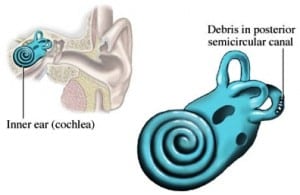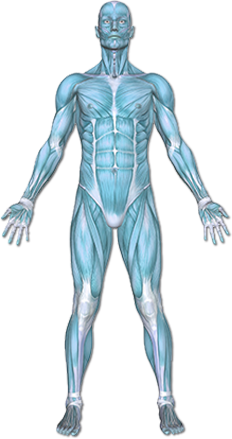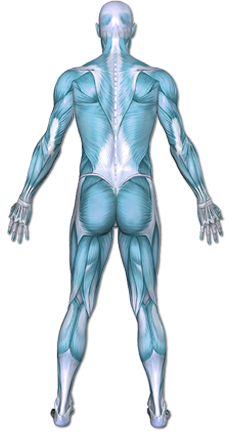Vertigo (BPPV)
Vertigo is a feeling of movement or spinning when you are still. Benign paroxysmal positional vertigo (BPPV) happens when the vertigo is caused by changes in the position of the head. This might include standing after bending down, turning the head in bed, or extending the neck to look up. People with BPPV can often identify which moves cause the most problems.


Copyright © Nucleus Medical Media, Inc.
This content was created using EBSCO’s Health Library
The inner ear contains tiny crystals. These crystals can sense movement and help you keep your balance. BPPV occurs because of a shift in location of the crystals or the clumping of these crystals. When this happens, your brain gets signals that you are moving when you are really not moving. This causes the feeling of movement. In some cases, the cause of BPPV is unknown. In others, it may be caused by:
- Head injury
- Viral infection
- Disorders of the inner ear
- Prolonged immobility of the head
- Age-related changes to the inner ear
This content was created using EBSCO’s Health Library
Increasing age increases your chances of getting BPPV.
This content was created using EBSCO’s Health Library
Symptoms may include:
- Sensation of spinning or rotation when you change head position. The sensation may last less than one minute.
- Loss of balance
- Nausea
- Vomiting
- Ringing or buzzing sounds in the ear
- Vision or hearing problems
This content was created using EBSCO’s Health Library
Your doctor will ask about your symptoms and medical history. A physical exam will be done. Part of the process will be to eliminate other disorders. Your doctor may recommend tests to help determine the cause of vertigo symptoms. Tests may include:
- Dix-Hallpike maneuver—moving your head or body in certain ways to test the response
- MRI
- Electronystagmography (ENG)
This content was created using EBSCO’s Health Library
VESTIBULAR REHABILITATION THERAPY
- This therapy is particularly effective in people with BPPV. These are exercises for your head, body and eyes that retrain your brain to process signals better. Over time, you will be able to tolerate different positions and movements better without feeling dizzy.
HOME OR WORKPLACE SAFETY INSPECTION
- If you have fallen two or more times in the past year, or if you have been hurt badly in a fall, tell your therapist. You will get tips describing what you can do to make your home or workplace safer.
EXERCISES
- Your therapist can create an exercise program to increase your strength and flexibility while in the home or workplace. Your therapist can change it to meet your needs and will guide you on when it is safe to increase your activity. They also have exercises they can use to improve your balance.
This content was created using EBSCO’s Health Library
There is no known prevention technique for BPPV.
This content was created using EBSCO’s Health Library
This content was created using EBSCO’s Health Library
- Erickson, W., Lee, C., & von Schrader, S. (2010, March 17). Disability Statistics from the 2008 American Community Survey. Retrieved December 7, 2011, from Cornell University Rehabilitation Research and Training Center on Disability and Statistics: http://www.disabilitystatistics.org
- Fall Prevention Center of Excellence. (2005). Retrieved January 3, 2012, from http://www.stopfalls.org
- Patient Education Reference Center, EBSCO Publishing.
- Lexi-Comp, Inc., EBSCO Publishing
- University of California Davis Health System. (2012). Retrieved January 2, 2012, from Center for Professional Practice of Nursing: http://www.ucdmc.ucdavis.edu/cne/health_education/guide.html
- Vestibular Disorders Association. (2011, December 8). Retrieved January 2, 2012, from http://www.vestibular.org
- Benign paroxysmal positional vertigo (BPPV). American Academy of Family Physicians Family Doctor website. Available at: http://familydoctor.org/online/famdocen/home/articles/200.html Updated July 2010. Accessed April 25, 2013.
- Benign paroxysmal positional vertigo (BPPV). EBSCO DynaMed website. Available at: http://www.ebscohost.com/dynamed Updated January 14, 2013. Accessed April 25, 2013.
- Benign paroxysmal positional vertigo (BPPV). Merck Manual for Health Care Professionals website. Available at: http://www.merckmanuals.com/professional/ear_nose_and_throat_disorders/inner_ear_disorders/benign_paroxysmal_positional_vertigo.html Updated November 2012. Accessed April 25, 2013.
- Benign paroxysmal positional vertigo (BPPV). Vestibular Disorders Association website. Available at: https://vestibular.org/understanding-vestibular-disorders/types-vestibular-disorders/benign-paroxysmal-positional-vertigo. Accessed April 25, 2013.
- Post RE, Dickerson LM. Dizziness: a diagnostic approach. Am Fam Physician. 2010;82(4):369.
This content was created using EBSCO’s Health Library


